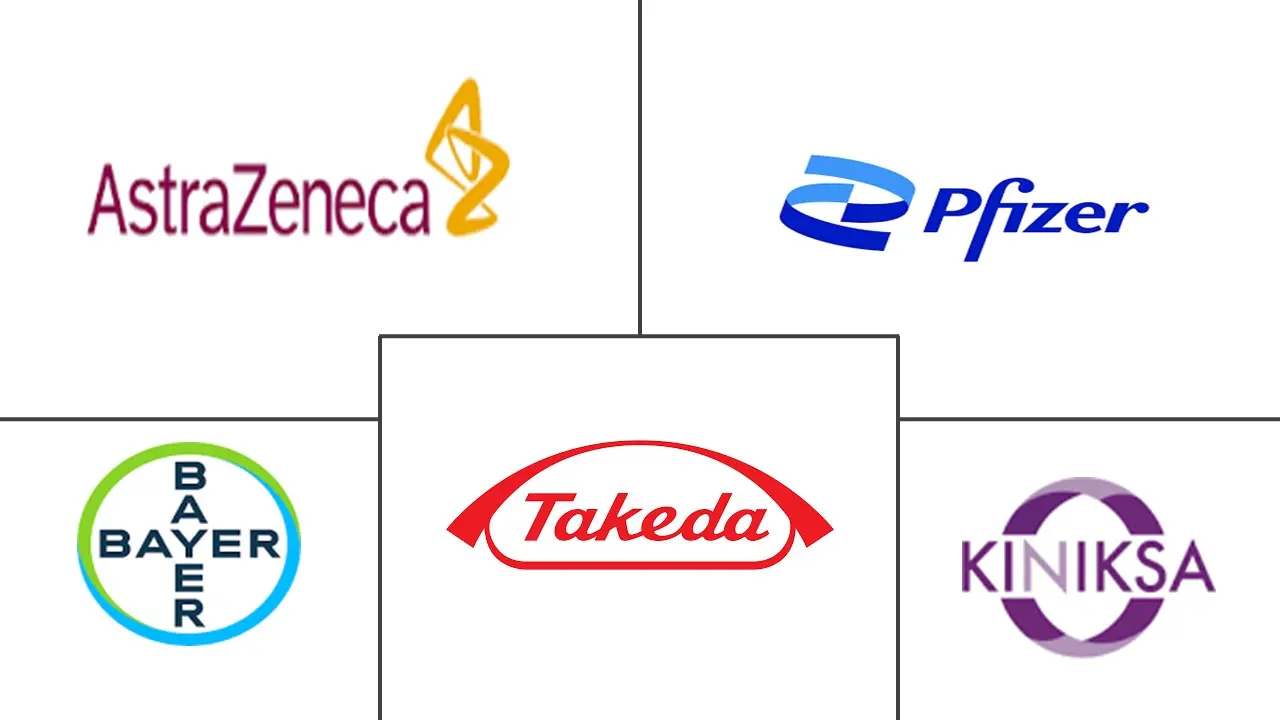Global Pericarditis Drugs Market Size and Share
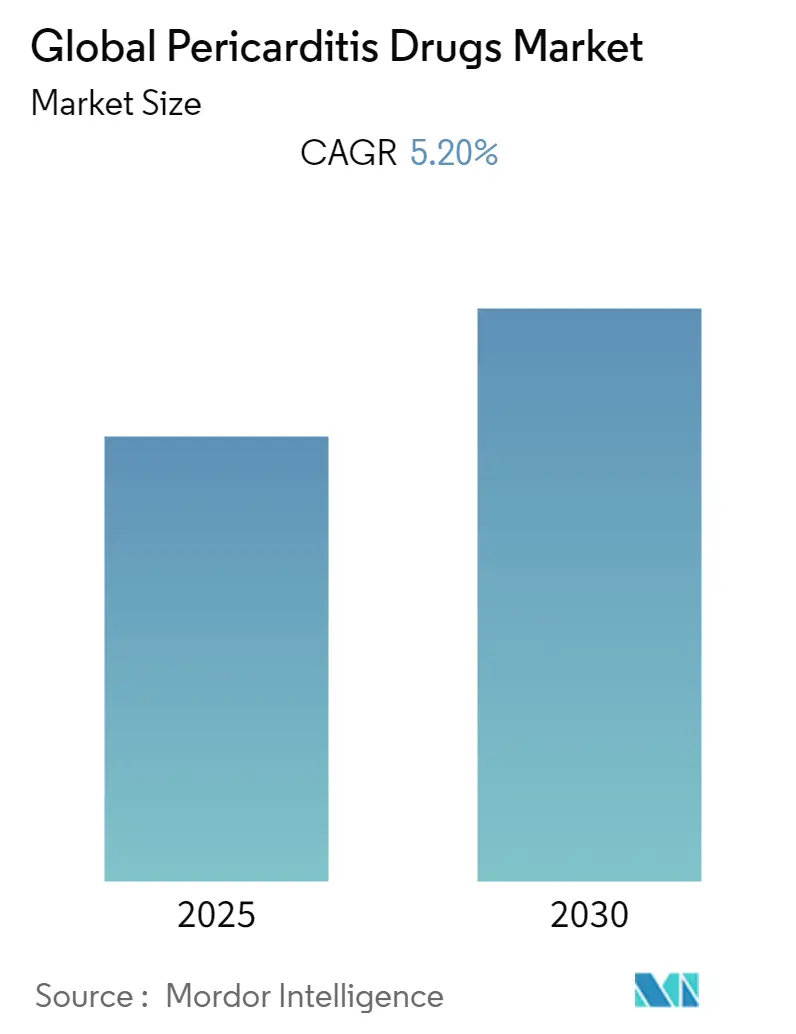
Global Pericarditis Drugs Market Analysis by Mordor Intelligence
The Global Pericarditis Drugs Market is expected to register a CAGR of 5.2% during the forecast period.
The pericarditis drugs market was substantially impacted by the COVID-19 pandemic. According to the study titled "Pericarditis in patients with COVID-19: a systematic review" published in the Journal of Cardiovascular Medicine in September 2021, COVID-19 patients with pericarditis had similar clinical features to other viral cardiotropic infections. NSAIDs and colchicine were used in half or less of the cases. Moreover, another study titled "Pericarditis after SARS-CoV-2 Infection: Another Pebble in the Mosaic of Long COVID?" published in PubMed.gov in October 2021, stated that in terms of COVID-19 and pericardial illnesses, pericarditis appears to be widespread during the acute infection but uncommon in the post-acute period, whereas minor pericardial effusions appear to be very common during the COVID-19 post-acute period. Furthermore, the study concluded that based on the findings and the delay of pericarditis, post-COVID pericarditis is linked to continuing inflammation caused by the persistence of viral nucleic acid in the pericardium without virus reproduction. As a result, glucocorticoids may be an effective treatment choice for patients that are not responding or are intolerant to conventional therapy and need to treat the pericardial inflammatory component rather than the acute viral infection. Thus, such studies highlight the growing use of pericarditis drugs among the COVID-19 patient population, in turn boosting the market growth.
Furthermore, the rise in the prevalence of cardiovascular diseases, pericarditis, and emerging therapies for pericarditis is expected to drive the market growth for pericarditis drugs. According to the July 2021 update by the World Health Organization, cardiovascular diseases are the leading cause of death around the world, including diseases such as coronary heart disease, cerebrovascular disease, rheumatic heart disease, congenital heart disease, and others. As per the same source, 17.9 million people around the world died from cardiovascular diseases, which amounted to about 32% of all global deaths. This high prevalence of cardiovascular diseases and deaths associated with it are expected to drive the market growth of pericarditis drugs, as pericarditis is often linked to cardiac surgeries and heart attacks. Furthermore, the data published by American Heart Association in April 2021 stated that pericarditis affects people of all ages. However, it is more common in men aged 16 to 65. Up to 30% of patients treated for acute pericarditis may acquire the condition again, with a small proportion acquiring chronic pericarditis.
Moreover, according to the study titled "US Database Study of Clinical Burden and Unmet Need in Recurrent Pericarditis," published in the Journal of American Heart Association in July 2021, the annual incidence of acute pericarditis is approximately 27.7 per 100,000 people. After the first episode, nearly 30% of patients experience disease recurrence. In developed countries, the mortality rate of acute pericarditis is around 1.1%. Thus, the rising prevalence of pericarditis is anticipated to boost the market growth over the forecast period.
Additionally, clinical trials are being conducted for the treatment of pericarditis to develop newer therapeutic drugs. For instance, according to ClinicalTrials.gov Updates in May 2021, a trial titled "A Pilot Study of KPL-914 in Recurrent Pericarditis" under the Phase II development is examining the preliminary efficacy and safety of KPL-914 treatment in participants with recurrent pericarditis. Similarly, according to the ClinicalTrials.gov updates in October 2021, the trial titled "Dexamethasone Compared to Non-steroidal Anti-inflammatory Drugs in the Treatment of Acute Pericarditis (Dexa-P)" is under phase IV development for assessing the use of dexamethasone as an alternative to NSAID for use in patients with acute pericarditis. Thus, growing clinical development activities by key market players are anticipated to drive the market over the forecast period.
However, side effects associated with pericarditis drugs are likely to restrain the market growth over the forecast period.
Global Pericarditis Drugs Market Trends and Insights
Nonsteroidal anti-inflammatory Drugs (NSAIDs) Segment is Expected to Dominate the Market Over the Forecast Period
By drug type, the nonsteroidal anti-inflammatory drugs (NSAIDs) segment is anticipated to garner the largest market share. Nonsteroidal anti-inflammatory drugs (NSAIDs) refer to a drug class that reduces pain, decreases fever, prevents blood clots, and decreases inflammation in higher doses. NSAIDs block enzymes in the body that produce prostaglandins. Prostaglandins are a group of naturally occurring fatty acids that play a role in pain and inflammation. The goal of NSAID treatment for patients with idiopathic or viral pericarditis is to reduce symptoms. These drugs have similar efficacy, with about 85-90% of patients experiencing relief from chest pain within days of treatment.
According to the study titled "Advances in pharmacotherapy for acute and recurrent pericarditis," published in Expert Opinion on Pharmacotherapy in April 2022, for acute and recurrent pericarditis, aspirin, or nonsteroidal anti-inflammatory drugs (NSAIDs), and colchicine is the first lines of treatments. In patients with multiple recurrences, drugs that block the NACHT, leucine-rich repeat, and pyrin domain-containing protein 3 (NLRP3) inflammasome/interleukin-1 (IL-1) axis are beneficial. Thus, such studies are expected to drive the segment's growth over the forecast period.
Furthermore, according to the study titled "A systematic review and meta-analysis of randomized controlled trials evaluating pharmacologic therapies for acute and recurrent pericarditis" published in the Trends in Cardiovascular Medicine in February 2022, randomized controlled trials (RCTs) evaluating NSAIDs, indomethacin, colchicine, steroids, intravenous immunoglobulins, immunomodulators, or interleukin receptor antagonists in adult patients with acute idiopathic pericarditis are ongoing. Colchicine plus NSAIDS and anakinra were found to be effective in preventing Acute idiopathic pericarditis (AIP) recurrences.
Thus, all the aforementioned factors are expected to boost the segment's growth over the forecast period.
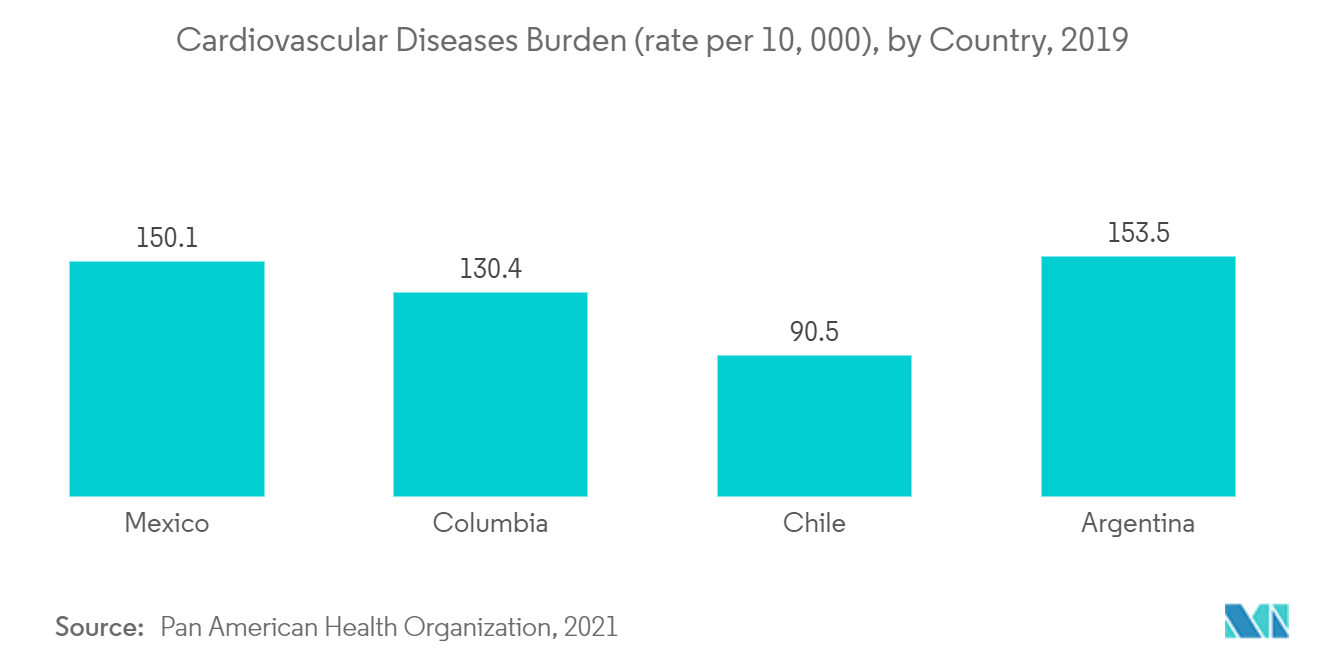
North America Dominates the Market and is Expected to do Same in the Forecast Period.
North America is anticipated to account for a major share of the global pericarditis drugs market during the forecast period. This is attributed to the large number of people diagnosed with cardiac disorders resulting in pericarditis, the presence of key market players, substantial R&D, and health care spending. Moreover, an increase in awareness about the pericardium inflammation associated with heart attacks in the patient population is expected to boost the growth of the market within North America.
According to the Centers for Disease Control and Prevention (CDC) 's article titled "Heart Disease Facts," updated in September 2020, heart disease is the leading cause of death in the United States. The same source also reports that every year, about 805,000 Americans have a heart attack. Moreover, as per the April 2020 data of the National Center for Health Statistics, the prevalence of age-adjusted hypertension in the United States was 45.4% in adults, 51% in men, and 39.7% in women. As pericarditis is mostly associated with heart diseases, the increasing prevalence of the diseased population is expected to drive the demand for its treatment, thereby boosting the market growth.
Additionally, a few of the key market players in the country are developing novel products and technologies to compete with the existing products, while others are acquiring and partnering with other companies operating in the market. For instance, in May 2021, the Food and Drug Administration (FDA) approved the first treatment for a disease that causes recurrent inflammation in the sac surrounding the heart. Arcalyst (rilonacept) injection has been approved by the FDA to treat recurrent pericarditis and reduce the risk of recurrence in adults and children aged 12 and up. In July 2020, Kiniksa Pharmaceuticals Ltd reported that the United States Food and Drug Administration (FDA) had granted orphan drug designation for rilonacept for the treatment of pericarditis, which includes recurrent pericarditis. Rilonacept is a weekly, subcutaneously injected, recombinant fusion protein that blocks interleukin-1 alpha (IL-1α) and interleukin-1 beta (IL-1β) signaling.
Thus, all the aforementioned factors are expected to boost the market growth in the region over the forecast period.
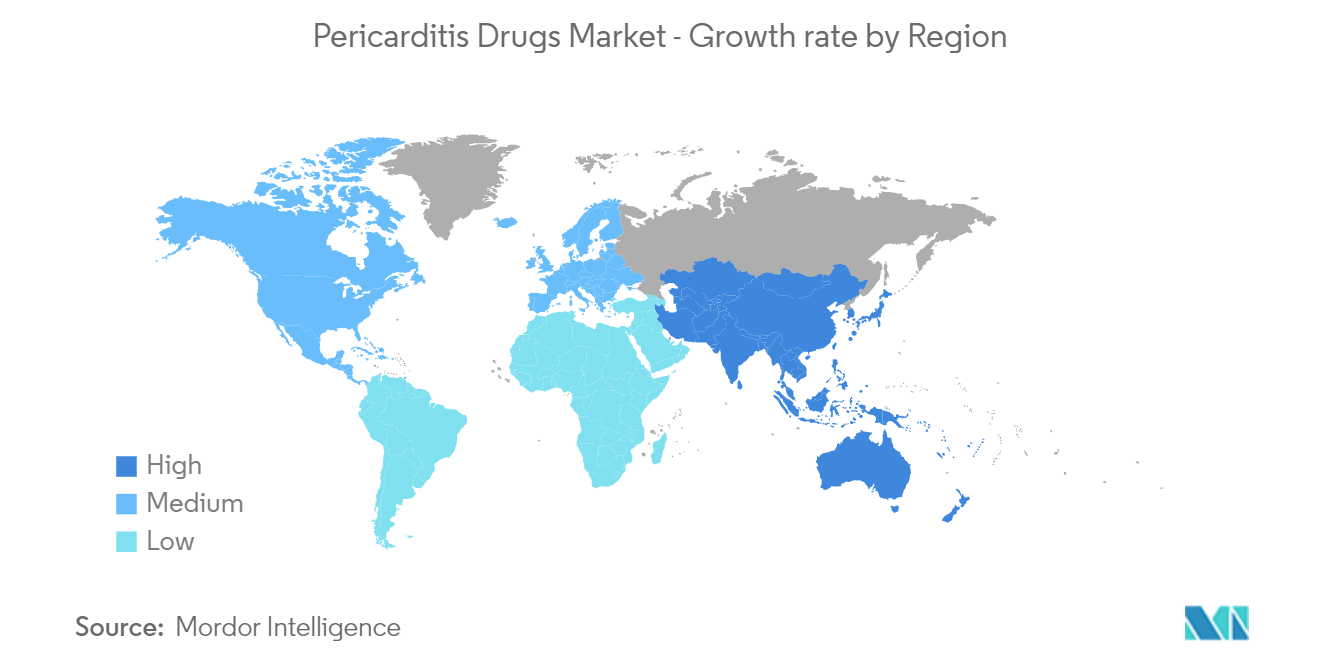
Competitive Landscape
The pericarditis drugs market is consolidated and moderately competitive. The major players have established themselves in specific segments of the market. Furthermore, the companies are competing in the emerging regions with global players and with established local players. Key players are developing and launching novel products and technologies to compete with the existing products, while others are acquiring and partnering with other companies trending in the market. Some of the major players include AstraZeneca plc, Bayer AG, Johnson & Johnson, Pfizer Inc., and Takeda Pharmaceutical Co. Ltd.
Global Pericarditis Drugs Industry Leaders
-
Kiniksa Pharmaceuticals
-
Pfizer, Inc.
-
Bayer AG
-
Takeda Pharmaceutical Co. Ltd.
-
AstraZeneca plc
- *Disclaimer: Major Players sorted in no particular order
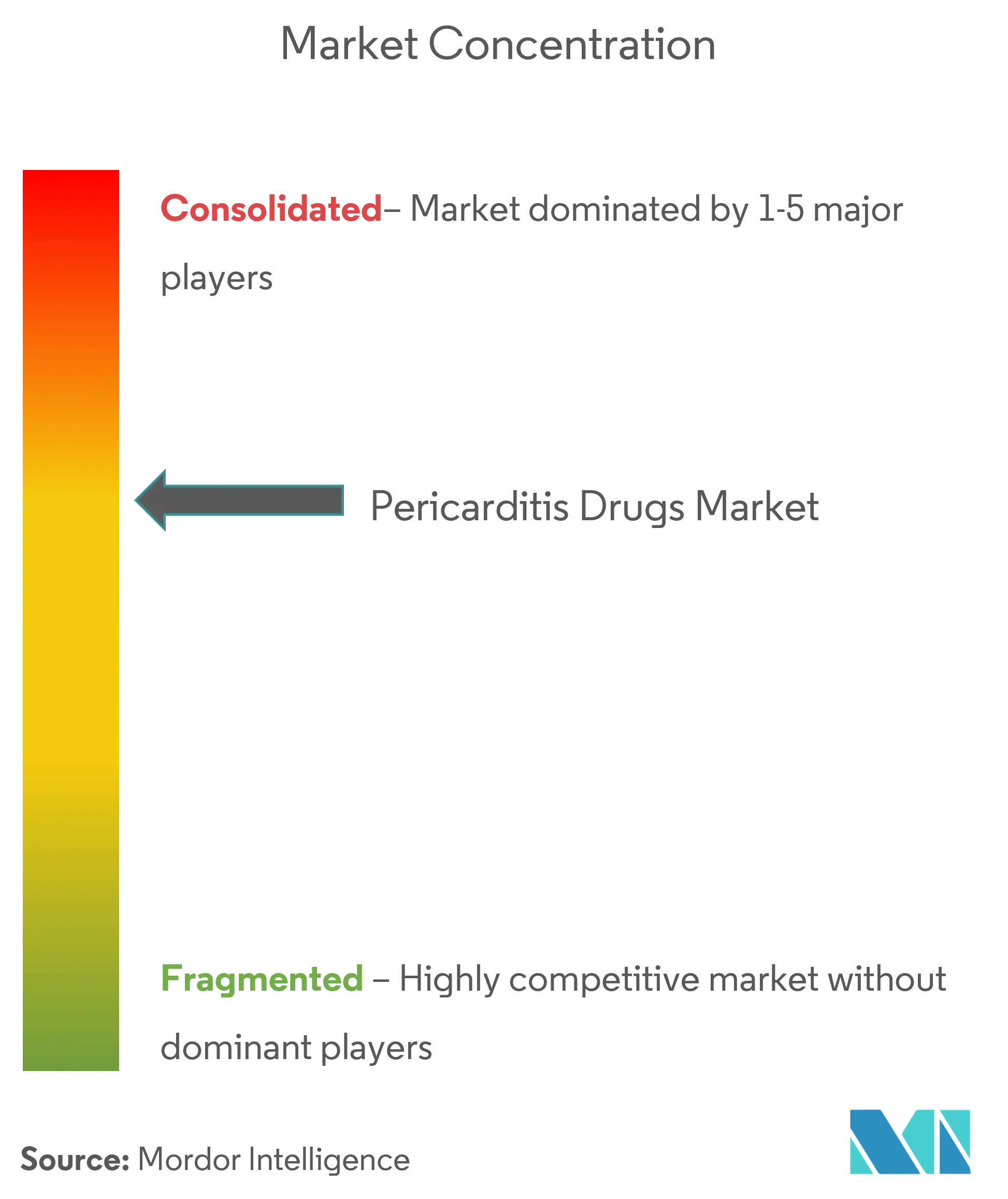
Recent Industry Developments
- In May 2022, Cardiol Therapeutics Announced FDA Investigational New Drug Application (IND) Authorization for Multicenter Phase II Open-label Pilot Study of CardiolRx for Recurrent Pericarditis.
- In March 2021, Kiniksa Pharmaceuticals, Ltd. reported the United States Food and Drug Administration (FDA) approved ARCALYST (rilonacept), a weekly, subcutaneously-injected, recombinant fusion protein that blocks interleukin-1 alpha (IL-1α) and interleukin-1 beta (IL-1β) signaling, for the treatment of recurrent pericarditis and reduction in risk of recurrence in adults and children 12 years and older.
Global Pericarditis Drugs Market Report Scope
Pericarditis is an inflammation of the pericardium. Pericardial effusion is an inflammation that develops around the heart's lining, resulting in chest discomfort and fluid buildup around the heart. Pericarditis can be acute or chronic. The pericarditis drugs market by drug type (nonsteroidal anti-inflammatory drugs (NSAIDs), colchicine, others), distribution channel (hospital pharmacies, retail pharmacies, online pharmacies), and geography (North America, Europe, Asia-Pacific, Middle-East and Africa, and South America). The market report also covers the estimated market sizes and trends for 17 different countries across major regions, globally. The report offers the value (in USD million) for the above-mentioned segments.
| Nonsteroidal anti-inflammatory drugs (NSAIDs) |
| Colchicine |
| Others |
| Hospital Pharmacies |
| Retail Pharmacies |
| Online Pharmacies |
| North America | United States |
| Canada | |
| Mexico | |
| Europe | Germany |
| United Kingdom | |
| France | |
| Italy | |
| Spain | |
| Rest of Europe | |
| Asia-Pacific | China |
| Japan | |
| India | |
| Australia | |
| South Korea | |
| Rest of Asia-Pacific | |
| Middle-East and Africa | GCC |
| South Africa | |
| Rest of Middle-East and Africa | |
| South America | Brazil |
| Argentina | |
| Rest of South America |
| By Drug Type | Nonsteroidal anti-inflammatory drugs (NSAIDs) | |
| Colchicine | ||
| Others | ||
| By Distribution Channel | Hospital Pharmacies | |
| Retail Pharmacies | ||
| Online Pharmacies | ||
| Geography | North America | United States |
| Canada | ||
| Mexico | ||
| Europe | Germany | |
| United Kingdom | ||
| France | ||
| Italy | ||
| Spain | ||
| Rest of Europe | ||
| Asia-Pacific | China | |
| Japan | ||
| India | ||
| Australia | ||
| South Korea | ||
| Rest of Asia-Pacific | ||
| Middle-East and Africa | GCC | |
| South Africa | ||
| Rest of Middle-East and Africa | ||
| South America | Brazil | |
| Argentina | ||
| Rest of South America | ||
Key Questions Answered in the Report
What is the current Global Pericarditis Drugs Market size?
The Global Pericarditis Drugs Market is projected to register a CAGR of 5.2% during the forecast period (2025-2030)
Who are the key players in Global Pericarditis Drugs Market?
Kiniksa Pharmaceuticals, Pfizer, Inc., Bayer AG, Takeda Pharmaceutical Co. Ltd. and AstraZeneca plc are the major companies operating in the Global Pericarditis Drugs Market.
Which is the fastest growing region in Global Pericarditis Drugs Market?
North America is estimated to grow at the highest CAGR over the forecast period (2025-2030).
Which region has the biggest share in Global Pericarditis Drugs Market?
In 2025, the Asia-Pacific accounts for the largest market share in Global Pericarditis Drugs Market.
What years does this Global Pericarditis Drugs Market cover?
The report covers the Global Pericarditis Drugs Market historical market size for years: 2019, 2020, 2021, 2022, 2023 and 2024. The report also forecasts the Global Pericarditis Drugs Market size for years: 2025, 2026, 2027, 2028, 2029 and 2030.
Page last updated on:
Global Pericarditis Drugs Market Report
Statistics for the 2025 Global Pericarditis Drugs market share, size and revenue growth rate, created by Mordor Intelligence™ Industry Reports. Global Pericarditis Drugs analysis includes a market forecast outlook for 2025 to 2030 and historical overview. Get a sample of this industry analysis as a free report PDF download.
